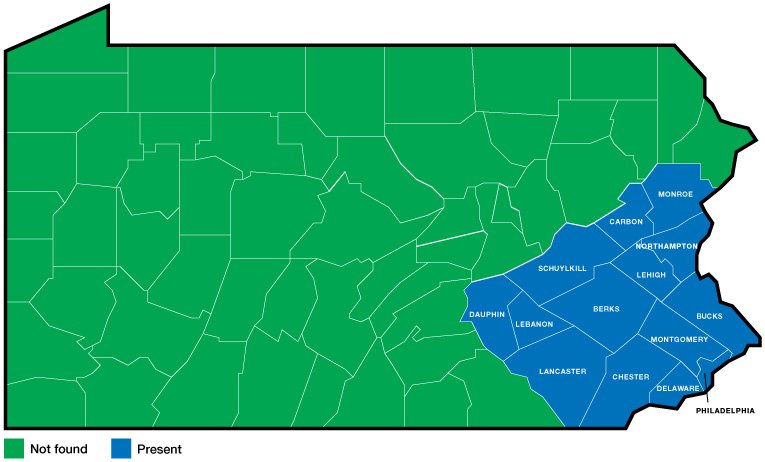Mia Cabral ‘22 Gianna Cilluffo ‘22 Abby Gallo:

Photo courtesy of Trisha Tsundupalli ’21
They are on our fields and our buildings, in our homes and our trees. These monsters can be found just about anywhere, jumping and attacking us when we least expect it. They are the spotted lanternflies, and unless something is done, they could be here to stay. Starting around the fall of last year, you might have seen these menaces lurking around Pottstown, Phoenixville, and other southeastern Pennsylvania towns. This year, they have reached EA.
Originating in Asia, spotted lanternflies most likely made their way here via shipping containers in 2014. Their population has grown exponentially since then, starting in Berks county and spreading to the EA community and beyond.
The non-native bugs have the power to “destroy the natural ecosystem of things already living there,” explained biology teacher Jenn Jones. “Invasive species become natural competitors for creatures that were already there. Because they don’t have predators here, they [the spotted lanternflies] have reproduced rapidly and there’s nothing in place to stop them other than humans.” The spotted lanternflies are already being held responsible for destroying fruit crops, but unless a natural predator for them arises, their damage has the potential to spread.
While these pests have already begun to impact the agriculture of Pennsylvania, they have not yet affected EA’s campus. Matt Kerns, groundskeeper and superintendent, states that, “[Lanternflies] are not doing that much damage to the campus. We are not doing anything to control them.”
Kerns believes that similar to the rapid rise and fall of stink bugs a few years ago, the lanternflies will eventually move through. “If we see them, we do what’s recommended by the state, we just squash them… they’re not doing too much damage to any of our trees.”
They have, on the other hand, had an impact on student life at EA. During their recess, middle and lower schoolers can be seen squashing the lanternflies as they play. Upper schoolers have been forced to join in on these activities, as the bugs have become a distraction for a lot of athletes on the field. The lanternflies will fly into athletes as they train, or land on them while they stand still.
Some students were unaware of the lanternflies’ presence on campus until recently. Rachel Letts ‘22 explains that she heard about the situation “through the grapevine” and is now also killing the bugs as soon as she sees them.
Others like Juliette Loor ‘22 claim that they “…did not know what lanternflies were. [I] seriously didn’t hear about them until this year.”

Photo Courtesy of PA Department of Agriculture.
The recommendations from the state are straight-forward; if one sees a lanternfly, kill it. The most eco-friendly option is to just squish the bugs, since other methods, like leaving tape for the bugs to become trapped on or spraying the bugs with chemicals, are effective but could possibly harm other aspects of the environment. Additionally, destroying the egg masses, which are brownish-gray globs found on tree trunks or other hard surfaces, can help to keep the population down. If one finds an egg mass, just scrape it off and smush it.
“Everyone is trying to kill them as soon as they see them,” Ashley Tang ‘22 states.